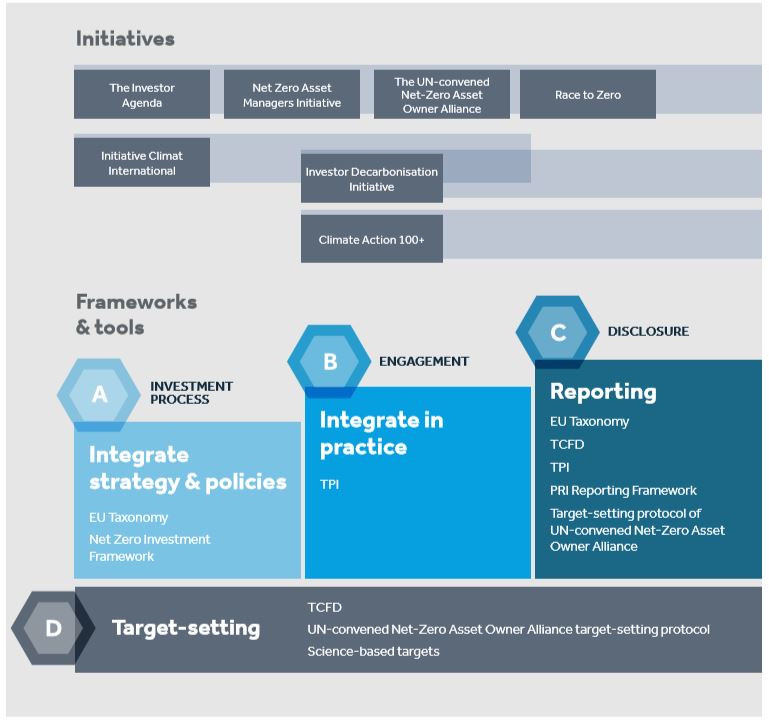Guidance, frameworks and initiatives abound in the race to net zero so it can be hard for asset managers and owners to know what plans to make and which initiatives to join.
In an attempt to provide clarity, the UN’s Principles of Responsible Investment (PRI) and London Stock Exchange Group (LSEG) have published the Investor guide to climate collaboration: From COP26 to net zero. Frameworks and initiatives are broken into four steps: investment process, engagement, disclosure and target-setting.
The guide also lists information on each framework and initiative and indicates which can be used at each part of the net-zero journey. “It maps the initiatives and frameworks together so you can match them up and take action,” Sagarika Chatterjee, director of climate change at the PRI and COP26 high-level champions finance lead said.

Speaking at a FTSE Russell webinar earlier this week were members of four of the initiatives listed in the guide – the Net Zero Asset Manager commitment, Climate Action 100+, the Net Zero Asset Owners Alliance and the Paris Aligned Investment Framework – who urged the 2,000-odd attendees to take action, and provided advice as to how to get involved.
“Come into the tent,” said Meryam Omi, head of sustainability and responsible investment strategy at LGIM, a signatory of Net Zero Asset Managers, urging those worried about not having targets and a plan in place before joining. “Because we’re all figuring it out together and it sends a really strong message to the policymakers.”
She added the initiative is about working in partnership with clients to shift those assets aligned to net zero over time. “But it can’t be an excuse that we can’t do anything until the clients ask, we have to be in the driving seat.”
The initiative requires announcements of 2030 net-zero targets, public engagement and advocacy, providing analytics and tools to asset owners, and annual disclosures. “So it’s quite ambitious for us but we have to do it together because there are so many guidelines and regulation floating around,” Omi said.
Climate Action 100+ is an initiative that “gets specific about net zero in 2050 and works backwards,” said Rick Lacaille, senior investment adviser and global head of ESG at State Street Global Advisers. “It’s also about collaboration and speaking with the same voice and asking for the same thing.”
The initiative is focused on engaging currently with around 160 companies accounting for around 80% of global emissions and will be publishing a benchmark next week.
Commitments made under the Net Zero Asset Owners Alliance must be at CEO level. Nili Gilbert, board member and chair of the investment committees at the David Rockefeller Fund, said because target-setting risks that some will “set and forget”, the Alliance commits members to five-year targets, which can be personalised to suit each member.
“People have to step up and be leaders on this issue,” she said, and suggested one way to get board buy-in is to bring experts in to meetings, lead with the conversation about financial risk but also talk about double materiality – the reality that you can’t protect the climate in a portfolio without protecting it in the outside world.
Finally, John Howchin, secretary-general of the council on ethics at Swedish National Pension Funds, and member of the Paris Aligned Investment Framework, said there is lots of free information and guidance available for those wanting to get started. He recommended the recent Implementation Guide as one place to look.
“If you don’t I’ll set Greta on you,” he joked.








